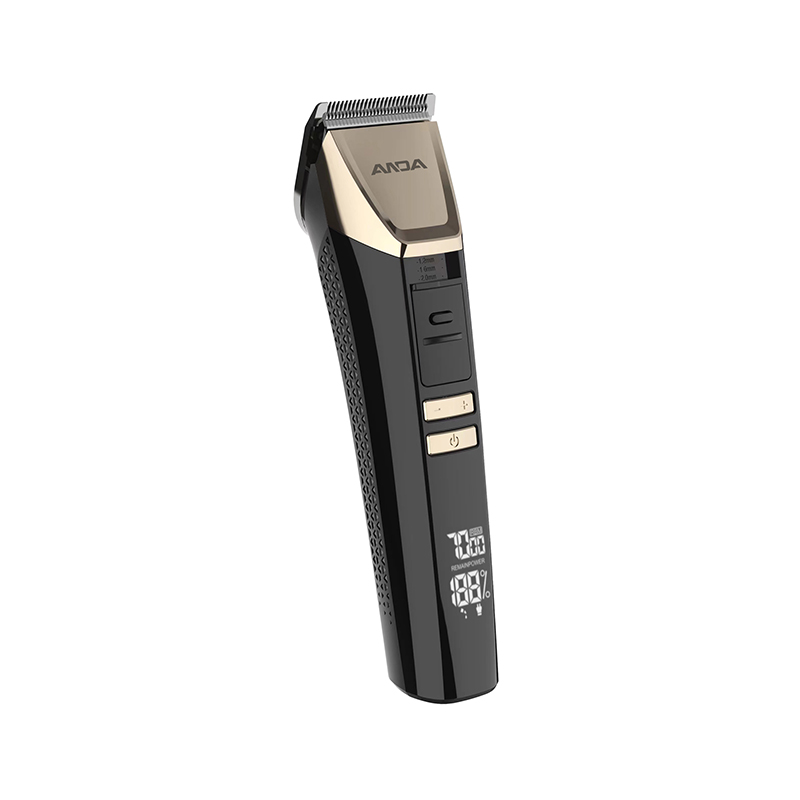 2025.08.08
2025.08.08
 Industry News
Industry News
Introduction to Blade Materials in Pet Electric Clippers
When evaluating the performance of a Pet Electric Clipper, many consumers focus on motor power or battery life. However, the blade material plays an equally critical role in determining the efficiency, safety, and long-term usability of the product. Different power levels in these grooming devices often correspond with different blade material choices, each tailored to a specific usage scenario. Whether trimming delicate fur or tackling thick undercoats, understanding blade materials helps users make informed decisions, especially in the one half of their grooming session. While the term "Pet Electric Clipper" may only appear a few times, the importance of this device lies in its design and construction, particularly the blade material it employs.

Stainless Steel Blades: The Standard Choice for Low to Mid Power Clippers
Stainless steel is the common blade material found in entry-level and mid-range pet grooming tools. These blades are known for their affordability, corrosion resistance, and decent cutting performance. Low to mid-power clippers, generally operating at lower RPMs, pair well with stainless steel because these motors do not generate excessive heat or stress on the blades. The main advantage of stainless steel is its cost-effectiveness and resistance to rust, making it suitable for home users who groom their pets occasionally. However, stainless steel tends to dull faster than other advanced materials, especially when used on thick or matted fur. It may also lack the precision and sharpness required for intricate grooming tasks, which can be a limitation for professional use.
Ceramic Blades: Preferred for Precision and Heat Resistance
Ceramic blades are increasingly common in mid to high-power pet clippers. They maintain sharpness longer than stainless steel and are ideal for precision grooming. One of their significant benefits is heat resistance; ceramic stays cooler even during extended use, reducing the risk of burning the pet’s skin. This is particularly important in high-power clippers that generate more friction. Despite these advantages, ceramic blades are more fragile and prone to chipping or breaking if dropped. They also tend to be more expensive, making them a better fit for professionals or experienced pet owners who value performance over budget.
Titanium-Coated Blades: Durability and Anti-Corrosion Performance
Titanium-coated blades combine the base strength of stainless steel with an added titanium layer for improved durability and corrosion resistance. These blades are typically found in high-power grooming tools that need to handle heavy-duty trimming, including breeds with coarse or double-layered coats. The titanium coating adds sharpness retention and extends the lifespan of the blade, making it ideal for frequent or professional use. On the downside, once the coating wears off, performance can degrade quickly unless the entire blade is replaced. Maintenance is also crucial to preserve the coating, as aggressive cleaning methods can strip it away.
Carbon Steel Blades: High Sharpness with High Maintenance
Carbon steel blades are favored for their good sharpness and cutting power, and are often used in powerful grooming machines. These blades are ideal for thick, dense fur where precision and strength are required. However, they come with a trade-off: carbon steel is highly susceptible to rust and corrosion, especially in humid environments or if the blade is not dried and oiled properly after use. While these blades offer top-tier cutting capability, they require regular maintenance and are not recommended for casual users who may overlook the cleaning routine.
Matching Blade Material to Clipper Power and Grooming Needs
Choosing the right blade material is not just a matter of preference but also one of compatibility with the clipper’s power level and the grooming frequency. Low-power devices typically pair well with stainless steel for light, occasional trimming. Medium to high power clippers benefit from ceramic or titanium-coated blades, offering better heat resistance and sharper performance. For heavy-duty use, carbon steel provides good sharpness but demands vigilant maintenance. By understanding the trade-offs of each blade type, pet owners and professionals alike can ensure suitable results while maintaining the longevity and safety of their grooming tools